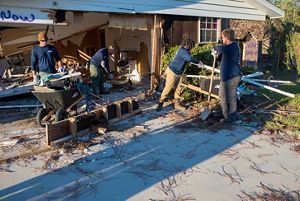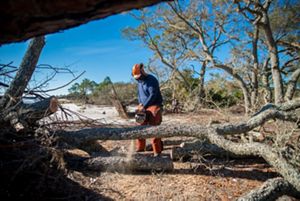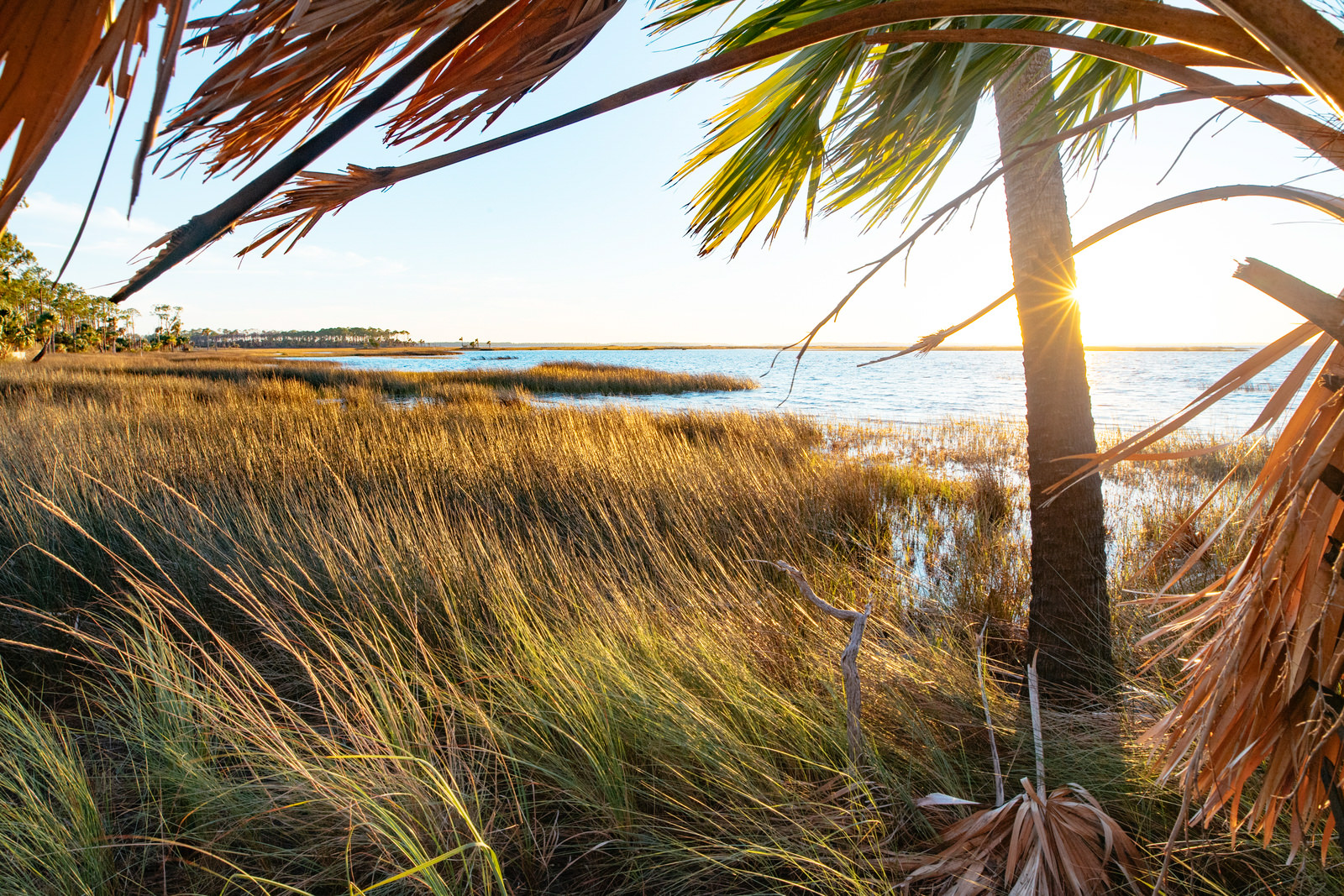Natural Solutions to Coastal Protection
New research will study effectiveness of marshes and other natural solutions in mitigating damage from Hurricane Michael.
Hurricane Michael, like Harvey, Irma and so many more, left a trail of devastation in its wake. More than 40 people died as a result of Michael, and communities in the storm’s path sustained more than $25 billion in damages. Coastal communities across the country are searching for ways to protect their towns and cities from the damages wrought by these storms.
Can Marshes Protect Communities from Storms?
The Nature Conservancy, in a new partnership with U.S. Naval Academy engineering professor Tori Johnson and Northeastern University professor Steven Scyphers, and funded by the Walton Family Foundation, is examining how natural ecosystems such as marshes might be able to mitigate the damage inflicted by these storms. By focusing on areas impacted by Hurricane Michael, the team is aiming to identify how nature itself may have offered protection from the storm.
Quote: Dr. Christine Shepard
Natural solutions can reduce flooding and damages from storms, and we should be proactively restoring and protecting coastal habitats and green spaces to reduce flooding.
“We know and have quantified the benefits provided by nature for other storms like Hurricane Sandy in the Northeast and Hurricane Ike in Texas,” said Dr. Christine Shepard, director of science for The Nature Conservancy’s Gulf of Mexico program. “Each study furthers the case for including nature-based approaches when planning to reduce risk to people and property along the coast.”
Which is Better Protection, Natural or Built Infrastructure?
Many coastal communities have long relied on built infrastructure for coastal protection. Massive structures like seawalls, often made of concrete or metal, are often looked to as the first line of defense to protect communities from crashing waves and floods.
“In some places, we need these walls,” says Scyphers, an assistant professor or marine and environmental science at Northeastern. They can provide an immediate barrier to protect specific locations such a streets or buildings. However, they may not be the best solution for communities and the environment
“There’s been a lot of research that shows that natural habitats like salt marshes are far more environmentally beneficial than seawalls and [other] artificial structures,” Scyphers says. “What we’re focused on with this study is understanding the role of these different types of structures in coastal protection, and that’s an area where a lot more science is needed. We hope this work will help communities prioritize ecosystem restoration efforts in areas that may reap the greatest benefits.”


Community Decision-Making
Much of The Nature Conservancy’s coastal work, in particular along the Gulf of Mexico, is focused on providing communities with the best possible science to assist in critical decision making about reducing flood risk. Complimentary work currently focused on Mississippi and Texas is helping communities in those states unlock significant savings. By implementing the Community Rating System (CRS) program, communities can identify opportunities to use nature-based solutions—such as open space protection and wetland restoration—to effectively reduce flood risk. These strategies in turn can lead to significant flood insurance savings.
“What we are finding is that there are ways to reduce flood risk for communities while benefiting the environment and saving money,” said Shepard. “What our research is beginning to consistently demonstrate, is that natural solutions can reduce flooding and damages from storms, and we should be proactively restoring and protecting coastal habitats and green spaces to reduce flooding ”

